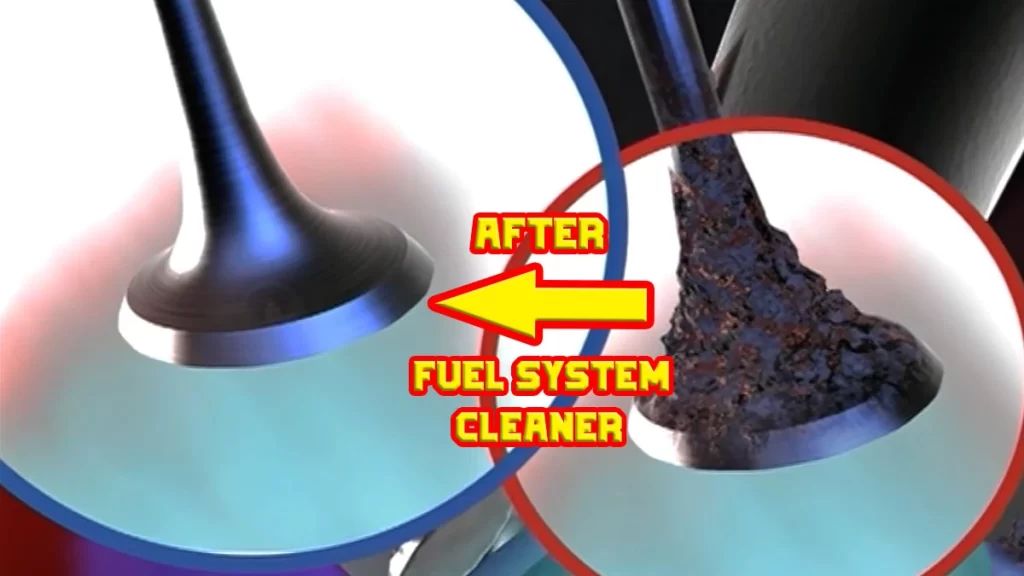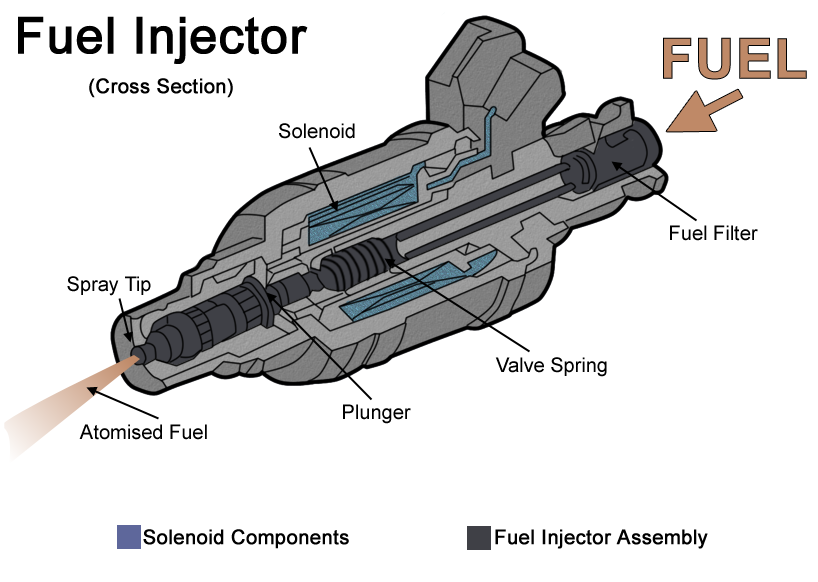Gummed-up fuel lines can do severe damage to your car’s engine and its parts with time. But before it does damage the parts, it mainly causes the engine to reduce its power and RPM when the fuel lines are gummed up. So, cleaning the gummed-up/ clogged fuel lines are very important for the smooth running of your car. So, this article discusses how to clean gummed up fuel lines on your hand.
What causes gumming of the fuel lines?
Here is how gumming occurs inside the fuel lines,
At ambient temperatures and with oxygen in the air, several hydrocarbons in gasoline blends, such as olefins and diolefins, can slowly react. As a result of the oxidation products created, an insoluble solid known as deposits or gums forms on the metal surfaces of the vehicle’s fuel system, from the tank to the combustion chamber. This gum adheres to the metal surfaces.
An engine’s performance, emissions, and durability can be negatively affected by the accumulation of these compounds. Therefore, predicting the behavior of gasoline blends and preventing gum formation is crucial, as is enhancing gasoline quality and making liberal use of additives. Even if there are fewer studies on gum development in gasoline mixes, the findings from other fuels can be applied to the gasoline problem.
What indicates gummed up fuel lines?
Before you we get into cleaning the gummed or clogged fuel lines, let’s see how you can identify that your car’s fuel lines are malfunctioning. Here are some indications for it.
- The engine won’t start. To get the engine to start, the oil supply must be depleted by the blocked fuel filter.
- Problems are becoming more urgent.
- Sputtering and Idling are regular occurrences.
- Intensely Smells.
- Misfiring/poor performance of the engine is a problem.
- When the Fuel Filter should be replaced.
How to clean gummed up fuel lines? Practical methods.
There are plenty of methods you can use to clean up the fuel lines. Here we bring 03 easy methods to clean the clogged fuel lines.
Using a fuel system cleaner.
This is probably the easiest method to when discuss about the How to Clean Gummed Up Fuel Lines with no extra effort. Before using a fuel system cleaner, you have to empty the fuel tank by manually running the engine.

- Step 01
Despite the fact that most fuel system cleaners operate in a similar manner, there are significant distinctions between brands. When using a fuel system cleaning, be careful to follow the manufacturer’s directions to the letter.
- Step 02
Fill your petrol tank with the cleaner’s contents. Puncture the plastic seal under the lid of the bottle after opening it. Use your vehicle’s gas filler neck to place the nozzle of the fuel system cleaner into the filler hole.
- Step 03
Pump gas into your vehicle. The additional gas you add to the tank will mix with the existing fuel cleaner. This will guarantee that the cleaner is adequately disseminated throughout the gasoline and will also assist the pump, in the beginning, taking up fuel with a cleaner in it immediately.
- Step 04
Begin the engine and let it run for a few minutes before shutting it off. In order to get to the engine, the fuel system cleaner will have to pass via the fuel pump and filter. Fuel pumps and other parts of the system can break down sediment deposits as it goes through.
Fuel filter system cleaning.
It is also crucial to clean the fuel filter systems because the gumming can occur anywhere the fuel is running. So, the following steps will be very beneficial for you when cleaning the fuel filter systems for cleaning the gummed fuel inside.
- Step 01
Remove the battery’s negative terminal. Usually, the battery may be found in the engine compartment or the trunk of the car. It will appear to be a black box with two posts protruding from the surface.
Locate the positive (+) and negative (-) terminal posts and release the nut connecting the cable to the negative post using the suitably sized wrench. Remove the cable by sliding it out.
- Step 02
Find the gas station where the pump is located. Because the crankshaft powers mechanical fuel pumps, they are typically located on the engine rather than in the fuel tank. The look and position of the mechanical fuel pump might vary significantly from vehicle to vehicle, so use an application-specific repair or service manual to help you locate it.
- Step 03
A container under the car will catch any petrol that leaks. Depending on how the pump is mounted, there is a good chance that some fuel will be spilled during this procedure. When working on a car’s gasoline pump, slide a container beneath the vehicle right beneath the pump itself to catch any spills.
- Step 04
Only remove fuel lines if they’re obstructing your path. On the pump, there will be two gasoline lines (an in and an out). You may keep them in place when you open the pump, but if you have to take one or both to reach the internal filter on your specific vehicle, release the hose clamps that are holding them in place. Pull the line away from the nozzle by pulling it back when the clamps have been removed.
- Step 05
Remove the top fuel pump housing’s center screw or nut. The gasoline filter cover is held in place by a nut or bolt that protrudes from the top of the mechanical fuel pump. Make sure you locate it and then use a wrench of the suitable size to remove it.

FAQs related to how to clean gummed up fuel lines.
How do you clean varnish out of fuel lines?
In the tank, add half a gallon of muriatic acid. Spend some time moving the tank. To remove varnish, leave the gas tank sitting overnight.
Does seafoam dissolve varnish?
Adding Sea Foam to gasoline not only dissolves hazardous varnish, gum, residues, and deposits but also prevents them from accumulating in fresh fuel, making it a great long-term stabilizer.
How do you clean a clogged fuel filter?
Can you put too much Sea Foam in gas?
Adding additional Sea Foam cleaning solution to fuel is safe for cleaning a gasoline or diesel fuel system. Induction cleaning equipment may have Sea Foam to fuel ratios as high as 50%. In addition, Sea Foam is manufactured from highly refined petroleum and will not harm an engine in any way.
We hope you’ve got the answer that you’ve needed for the question, “How to Clean Gummed Up Fuel Lines” reading our explanation. If you have more questions just leave a comment below, and we are really straightforward to help you further. If you need review of the Remove Caked on Grease from Engine, check this link for it. Thank you.
